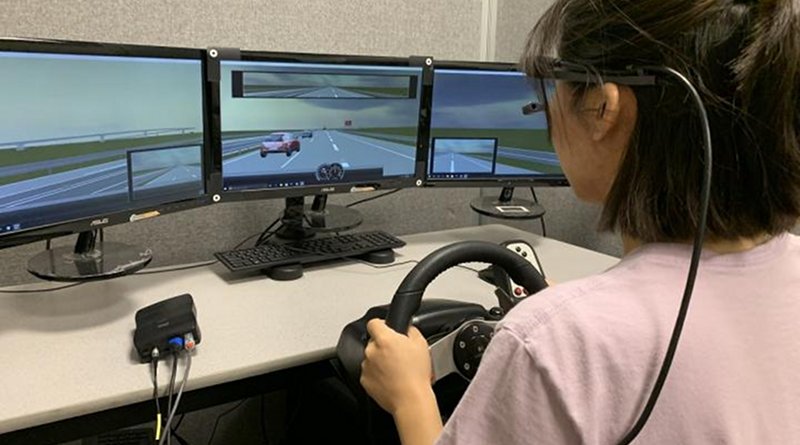Seeing Is Believing: Eye-Tracking Technology Could Help Make Driving Safer
“Keep your eyes on the road.”
With the recent advances in vehicle-assisted safety technology and in-car displays, this old adage has a new meaning, thanks to two new applications of eye-tracking technology developed by researchers at the University of Missouri.
Designing a better collision avoidance warning
Observing how someone’s eyes change — specifically the pupil — while they respond to an alert given by a vehicle collision avoidance warning could one day help scientists design safer systems.
“Prior to a crash, drivers can be easily distracted by an alert from a collision avoidance warning — a popular feature in new vehicles — and we feel this could be a growing problem in distraction-related vehicle crashes,” said Jung Hyup Kim, an assistant professor of industrial and manufacturing systems engineering in the MU College of Engineering.
“Therefore, a two-way communication channel needs to exist between a driver and a vehicle. For instance, if a driver is aware of a possible crash, then the vehicle does not have to warn the driver as much. However, if a vehicle provides an alert that, by itself, creates a distraction, it could also cause a crash.”
Kim and Xiaonan Yang, a graduate student at MU, watched how people’s pupils changed in response to their physical reactions to a collision avoidance warning by a vehicle-assisted safety system. Researchers believe they have enough data to begin the next step of developing a two-way communication model.
Evaluating rear-end accidents from a driver’s perspective
A person’s pupil could also help scientists find a way to decrease distracted driving crashes through a first-hand perspective into a driver’s behavior, according to Kim and Rui Tang, a graduate student at MU. Using a driving simulator at the MU College of Engineering, the researchers evaluated a driver’s physical behavior in real-time by focusing on the driver’s eyes as the crash happened.
“We saw the size of a person’s pupil changed depending on the behavioral response to the severity of the accident,” Kim said. “Now, we want to take that data, find common patterns and build a model to test how we could help decrease distracted-driving crashes.”

